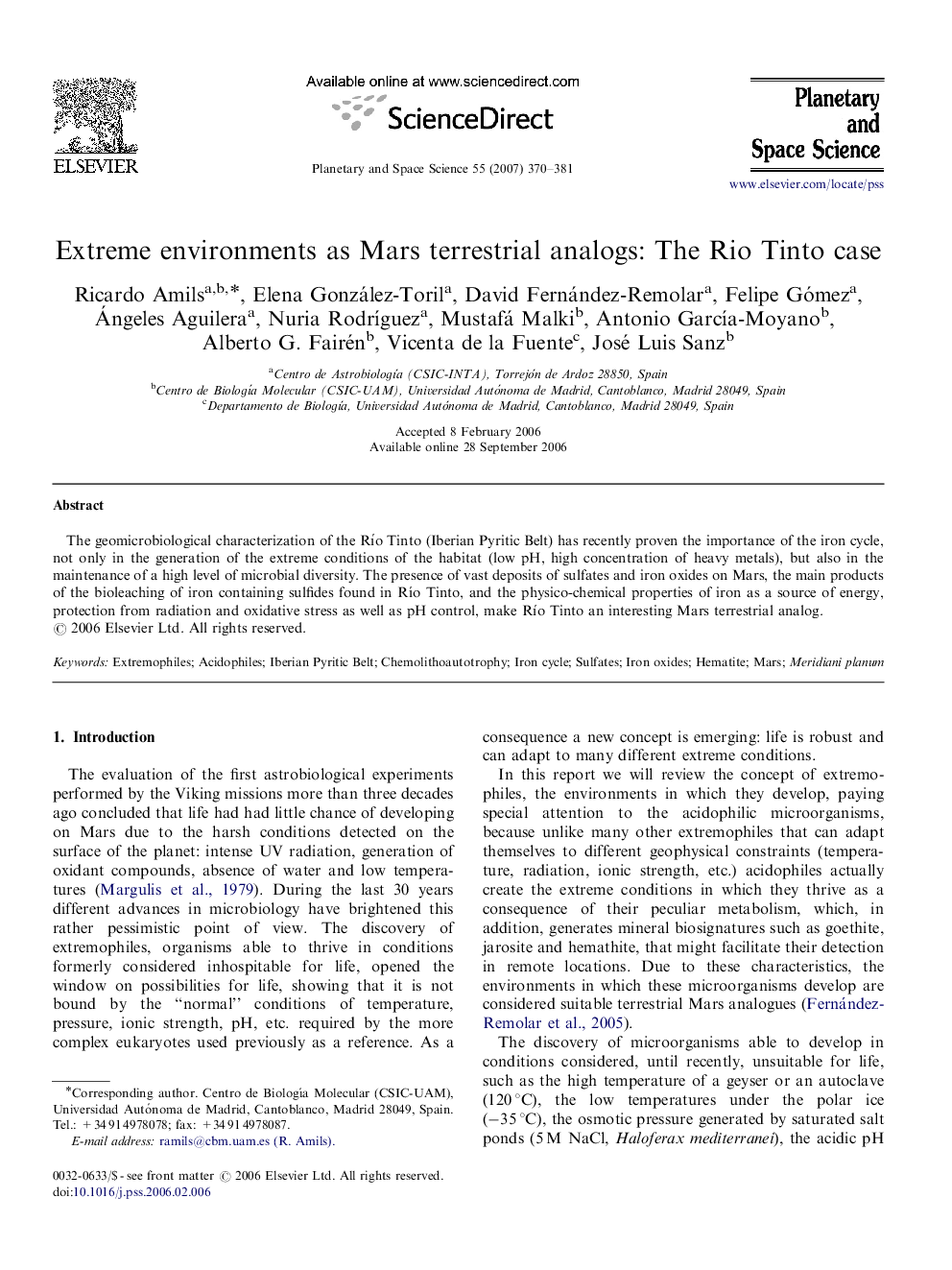| Article ID | Journal | Published Year | Pages | File Type |
|---|---|---|---|---|
| 1782732 | Planetary and Space Science | 2007 | 12 Pages |
Abstract
The geomicrobiological characterization of the Río Tinto (Iberian Pyritic Belt) has recently proven the importance of the iron cycle, not only in the generation of the extreme conditions of the habitat (low pH, high concentration of heavy metals), but also in the maintenance of a high level of microbial diversity. The presence of vast deposits of sulfates and iron oxides on Mars, the main products of the bioleaching of iron containing sulfides found in Río Tinto, and the physico-chemical properties of iron as a source of energy, protection from radiation and oxidative stress as well as pH control, make Río Tinto an interesting Mars terrestrial analog.
Keywords
Related Topics
Physical Sciences and Engineering
Earth and Planetary Sciences
Geophysics
Authors
Ricardo Amils, Elena González-Toril, David Fernández-Remolar, Felipe Gómez, Ángeles Aguilera, Nuria Rodríguez, Mustafá Malki, Antonio García-Moyano, Alberto G. Fairén, Vicenta de la Fuente, José Luis Sanz,
